
Flea, Tick & Wormers
Our selection of cat flea treatment options makes flea control manageable, eradicating the fleas in your home and on your pet. Whether you’re taking preventative measures or dealing with a pest problem, these solutions will make the whole process quick and effective.
How to care for a cat with fleas
How to treat and prevent cat fleas
Cat fleas – there are few things more frustrating for owners. If you’ve ever had to deal with fleas on your pet, you’ll understand how much of a problem the situation can be and how difficult it can be to resolve. No matter how clean your home is and how well you care for your pet, if you don’t treat them for fleas regularly, chances are they’ll strike sooner or later.
![[object Object]](https://i1.adis.ws/i/petsathome/Howtocareforacatwithfleas-2.jpg?qlt=50&w=400)
If your cat already has fleas, you can follow the steps in this guide to deal with them quickly.
Understanding where cat fleas come from
Cats can pick up fleas from fellow cats or other animals while they’re out exploring. It’s easy for fleas and flea eggs to transfer from one animal to another. Flea eggs can also survive in carpets and other furnishings.
It’s difficult to identify precisely where a flea infestation has come from, especially if your cat doesn’t go outside, but the most important thing is that you get rid of them as quickly as possible.
How to check if your cat has fleas
If your cat is scratching themselves persistently, or seems to be over-grooming, it might be because they’re feeling the itch of a flea infestation. If your pet has a flea allergy, you might also see red, sore areas of skin.

To check if your cat has fleas, look closely at their coat. Cat fleas are usually 1-2mm long and are dark brown in colour, so they might be tricky to spot if your cat has similarly dark fur. Flea dirt is usually easier to spot than the flea itself – look out for black specks in your pet’s coat. If you’re unsure, don’t hesitate to take your pet to your local vet for an expert second opinion.

Spot On Flea and Tick (6 pipettes)
FRONTLINE
£20.79
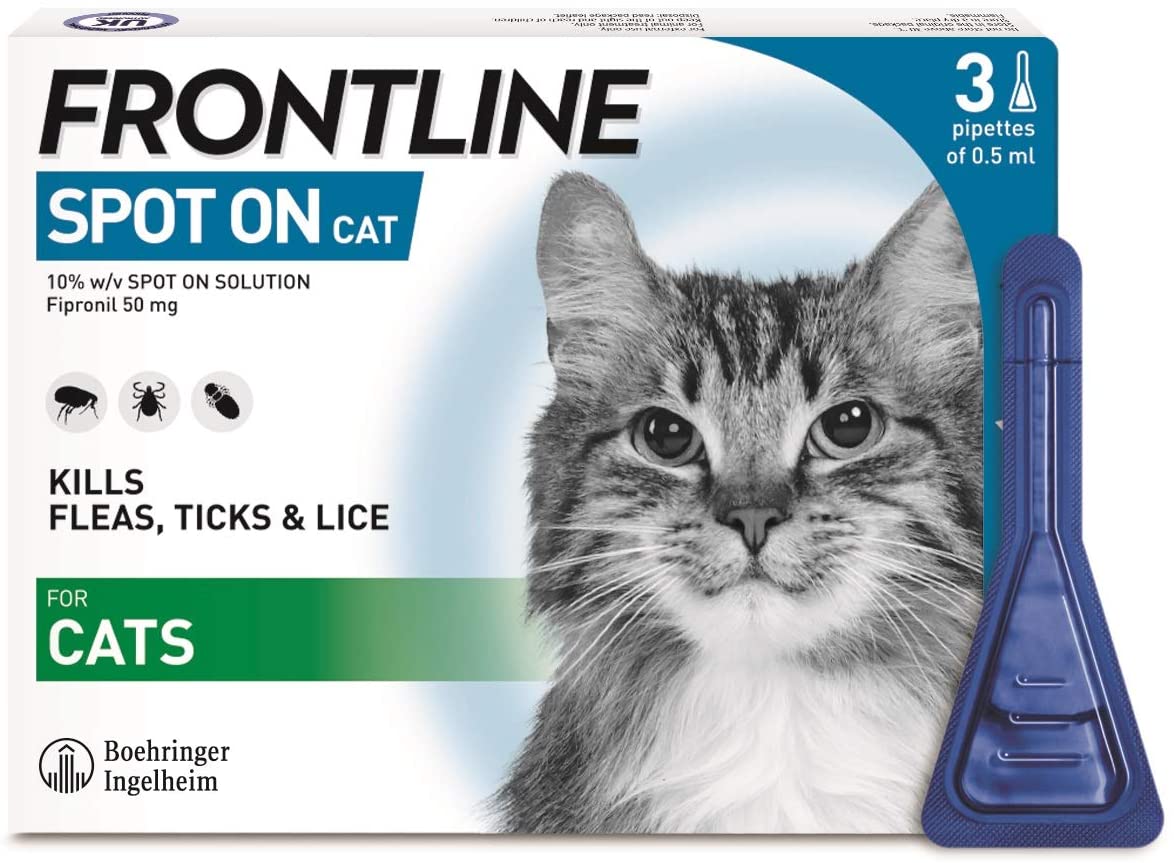
Spot On Flea and Tick (3 pipettes)
FRONTLINE
£11.99
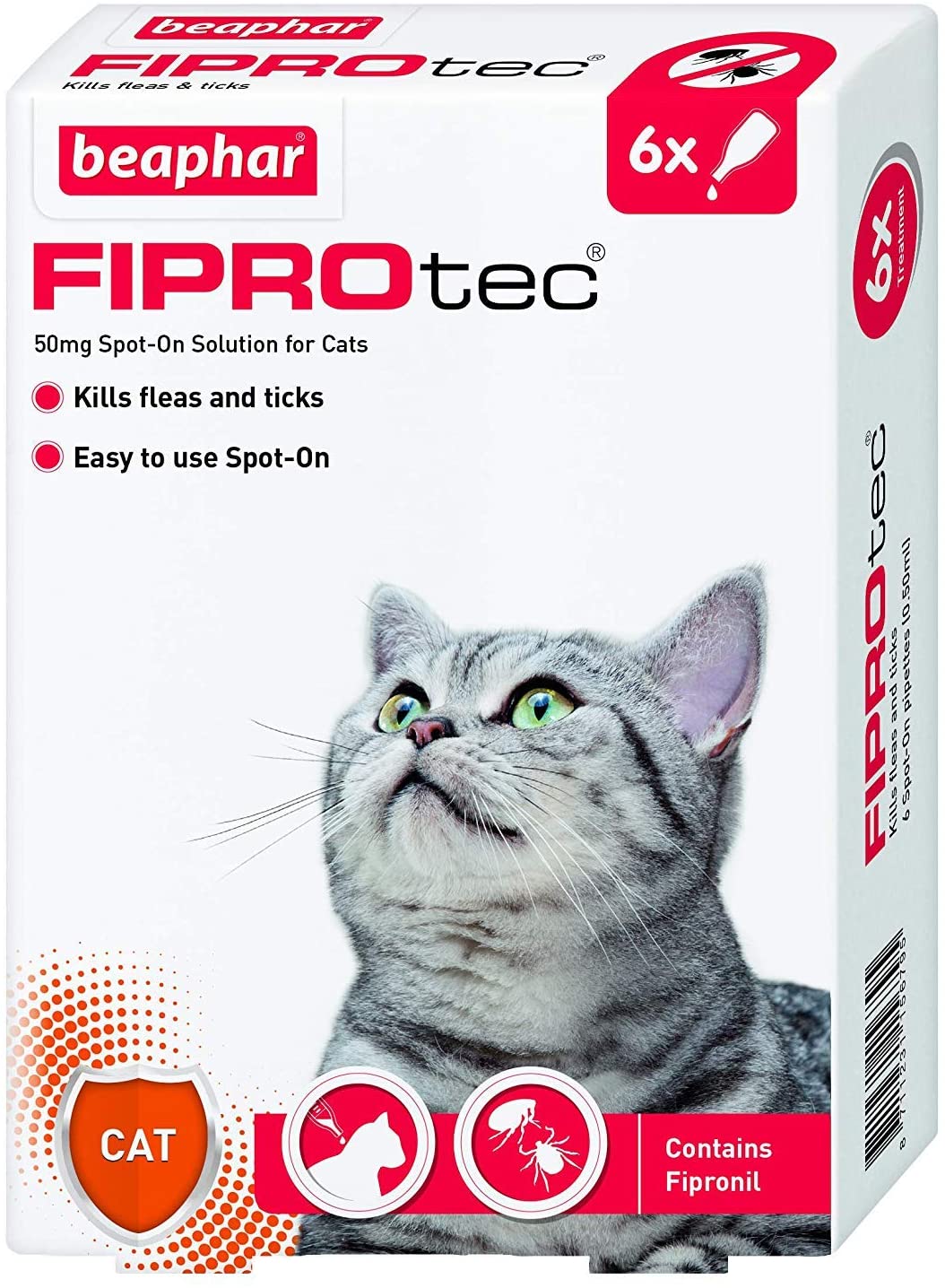
Fiprotec Spot On Cat (6 Pipettes)
Beaphar
£9.92
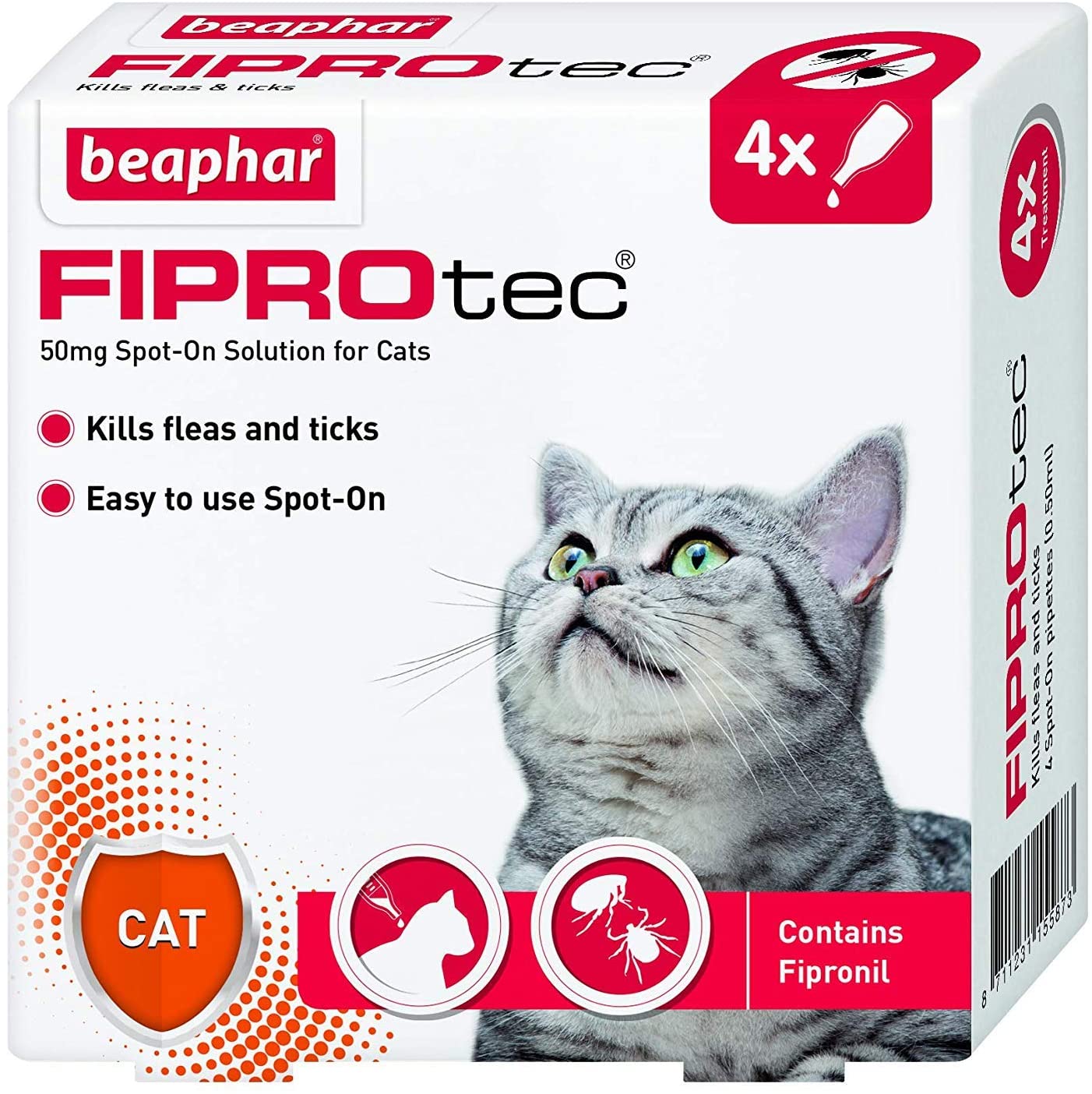
Fiprotec Spot On Cat (4 Pipettes)
Beaphar
£6.83
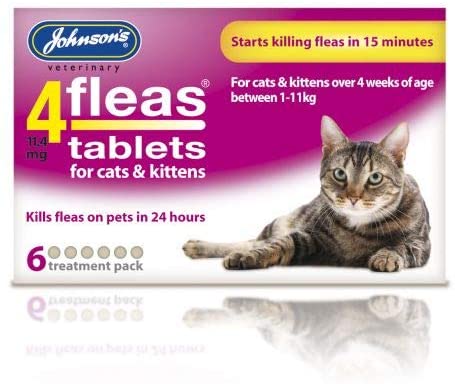
4Fleas Tablets (6 tabs)
Johnsons
£12.24
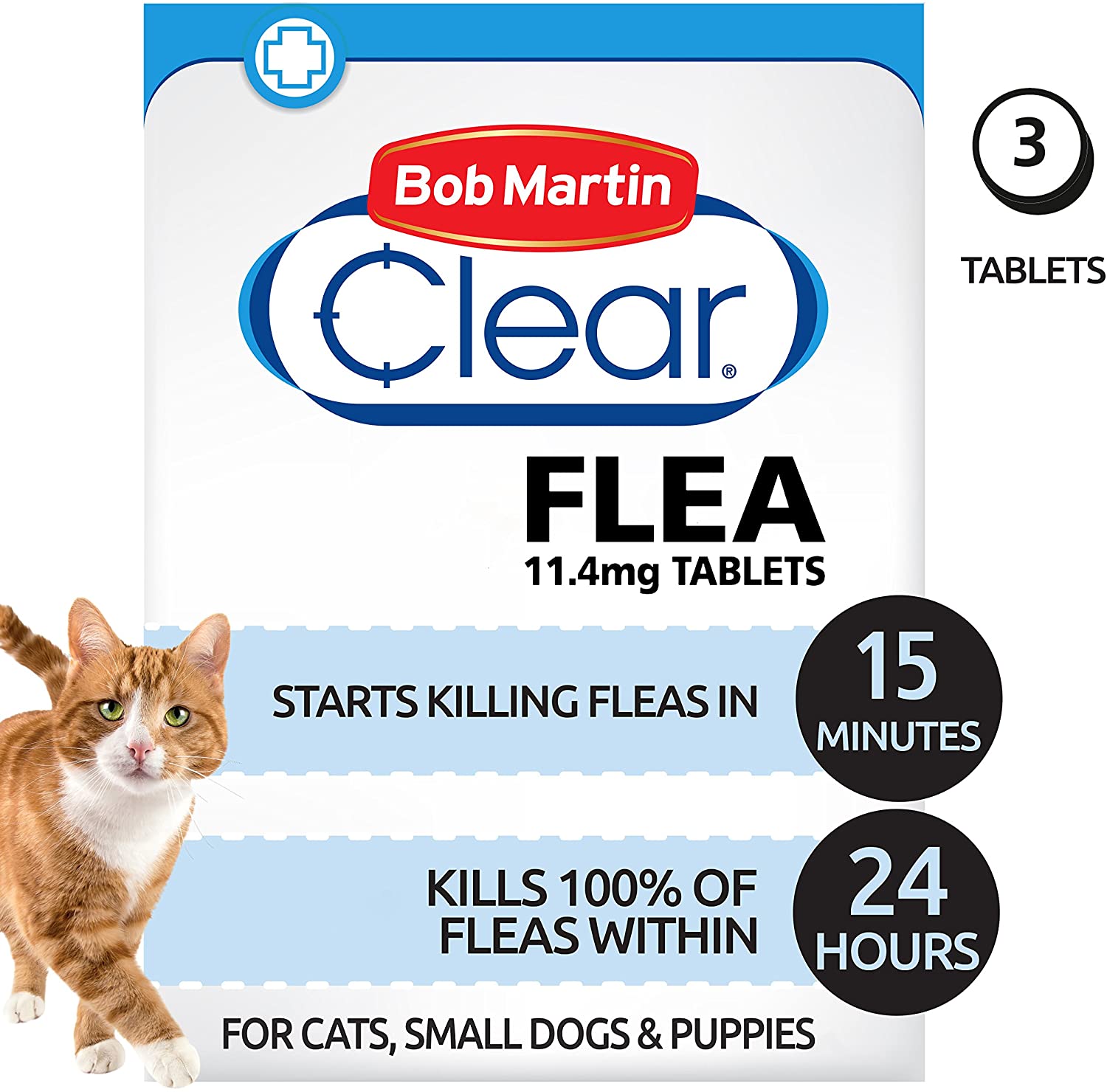
Clear Flea Tablets (3 Tabs)
Bob Martin
£4.87
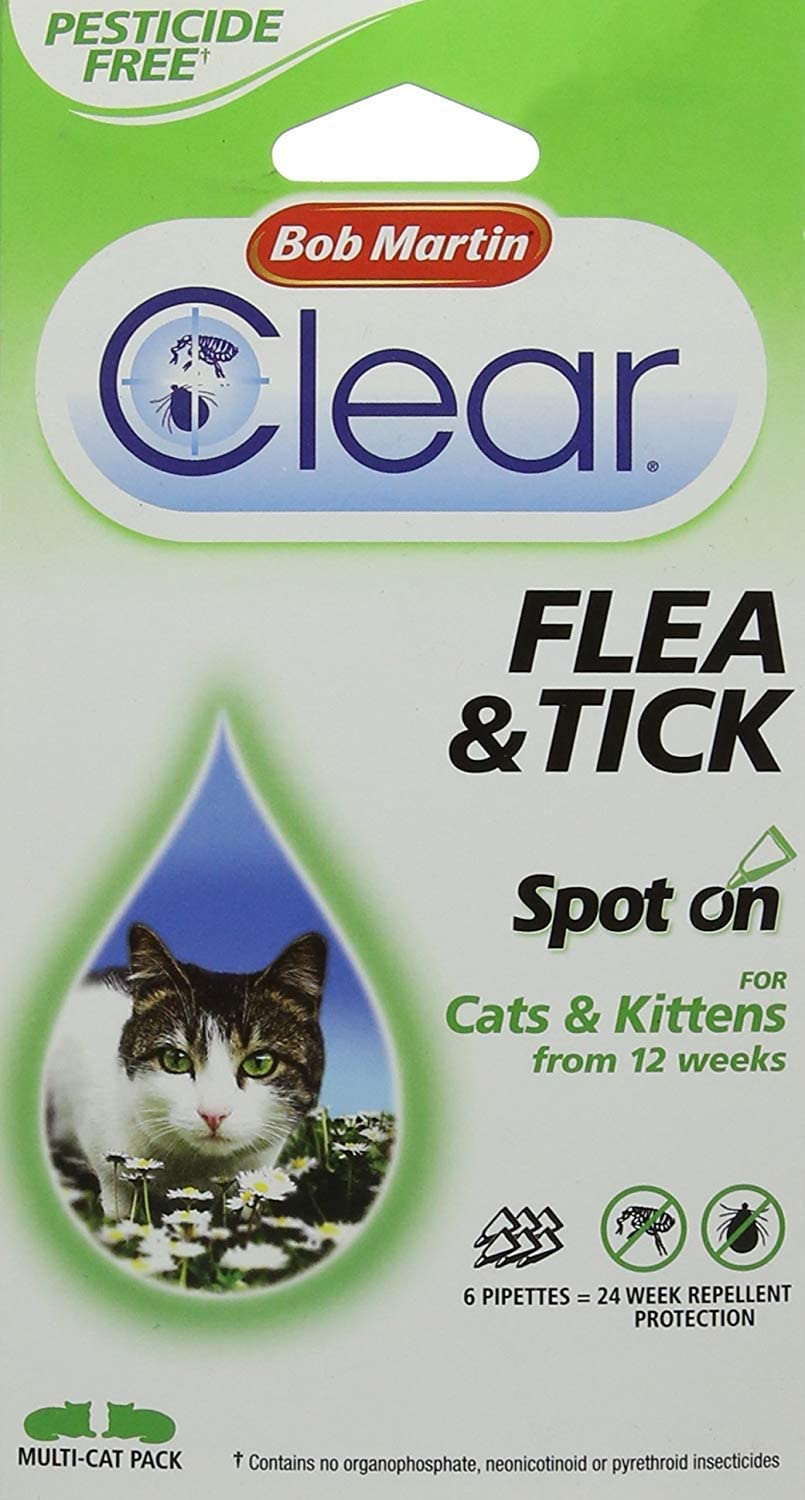
Clear Flea & Tick (6 Pipettes)
Bob Martin
£8.90
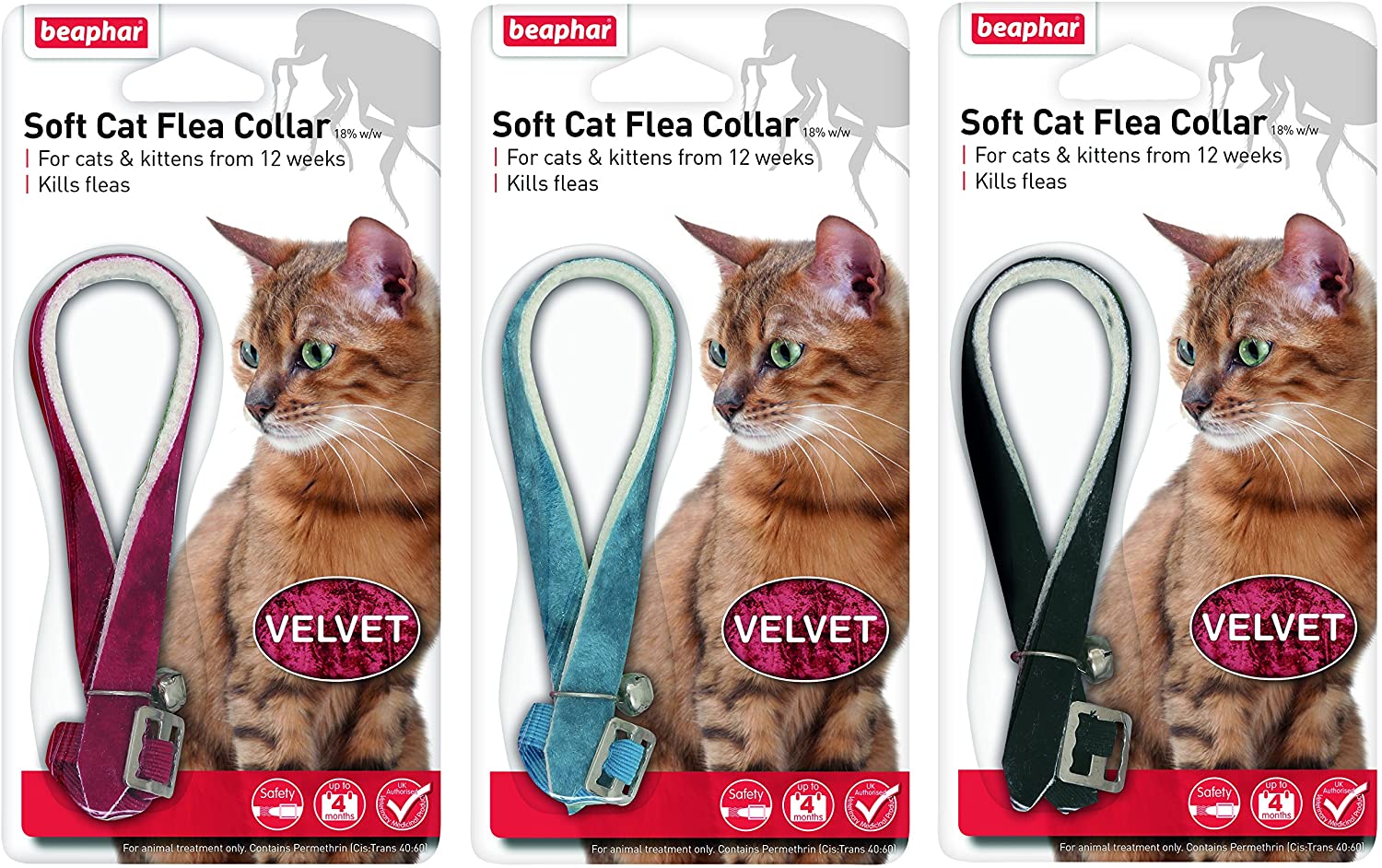
Cat Flea Collar
Beaphar
£3.40

Grooming Comb
Masterclip
£4.99
How to treat cat fleas
If your cat does have fleas, you need to respond quickly to ensure they don’t spread or further irritate their skin.

- Use a cat flea treatment – you might want to ask your vet for a product recommendation; your vet can also check your pet’s weight to ensure you give them the correct dose of treatment
- Over the next few days, groom your cat with a flea comb – if you find any fleas or eggs, drown them in a dish of soapy water before you continue
Important: never use a dog flea treatment on your cat, as the ingredients which treat fleas in dogs can be extremely harmful to cats, leading to seizures or even death.
There are several types of cat flea treatment which you might prefer to use, though spot-on treatments are preferred by most for their clean, convenient application.
Types of cat flea treatment
There are several types of cat flea treatments available – the most popular are:
:max_bytes(150000):strip_icc()/GettyImages-980941190-5c101fb0c9e77c000153fa9a.jpg)
- Spot-on treatments
- Tablets
If your cat has fleas and you aren’t sure which treatment is best, enquire at your local vet.
Preventing cat fleas
How often should you treat your cat for fleas?
No owner wants to have to deal with fleas on their cat, and thankfully, there is no need to. If you treat your cat for fleas monthly when there is no infestation present, you can ensure that your pet remains flea-free throughout their life. No matter what type of pet you own, whether it’s a cat, dog, or rabbit, regular flea treatments are important.





